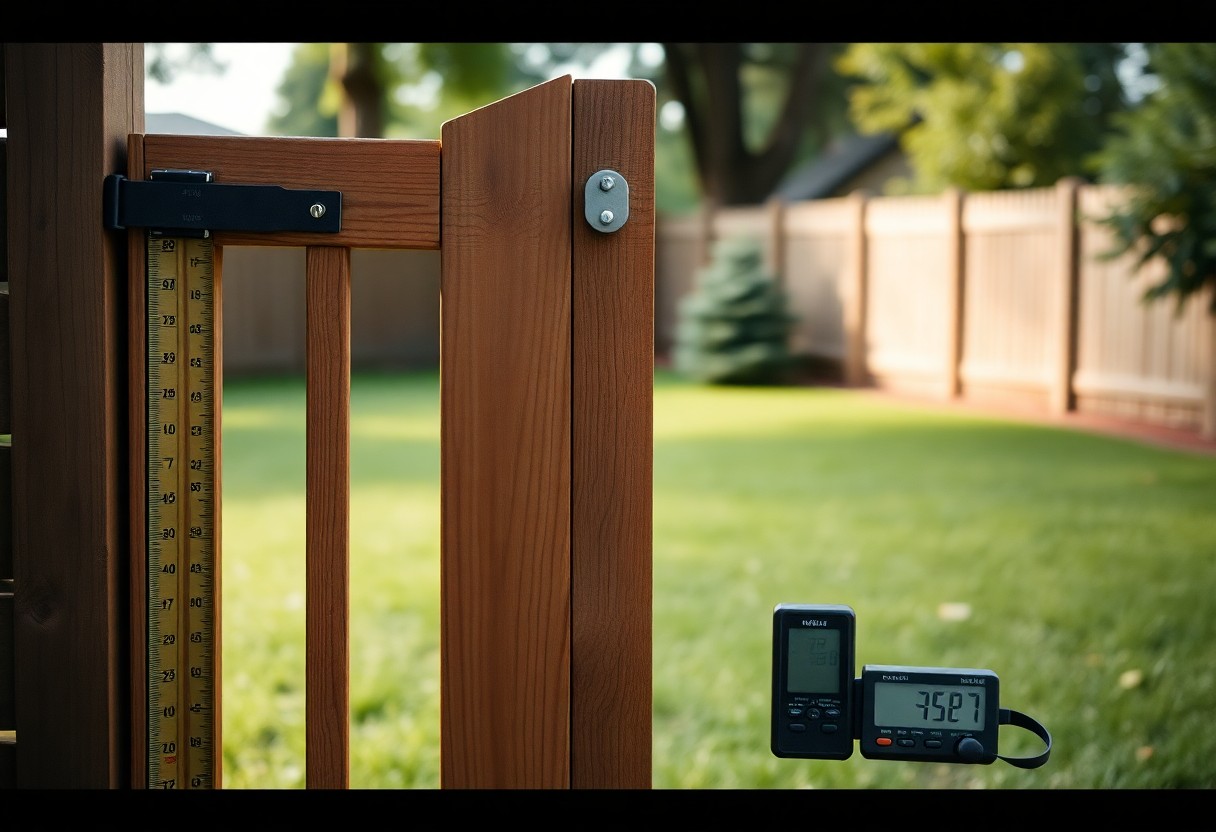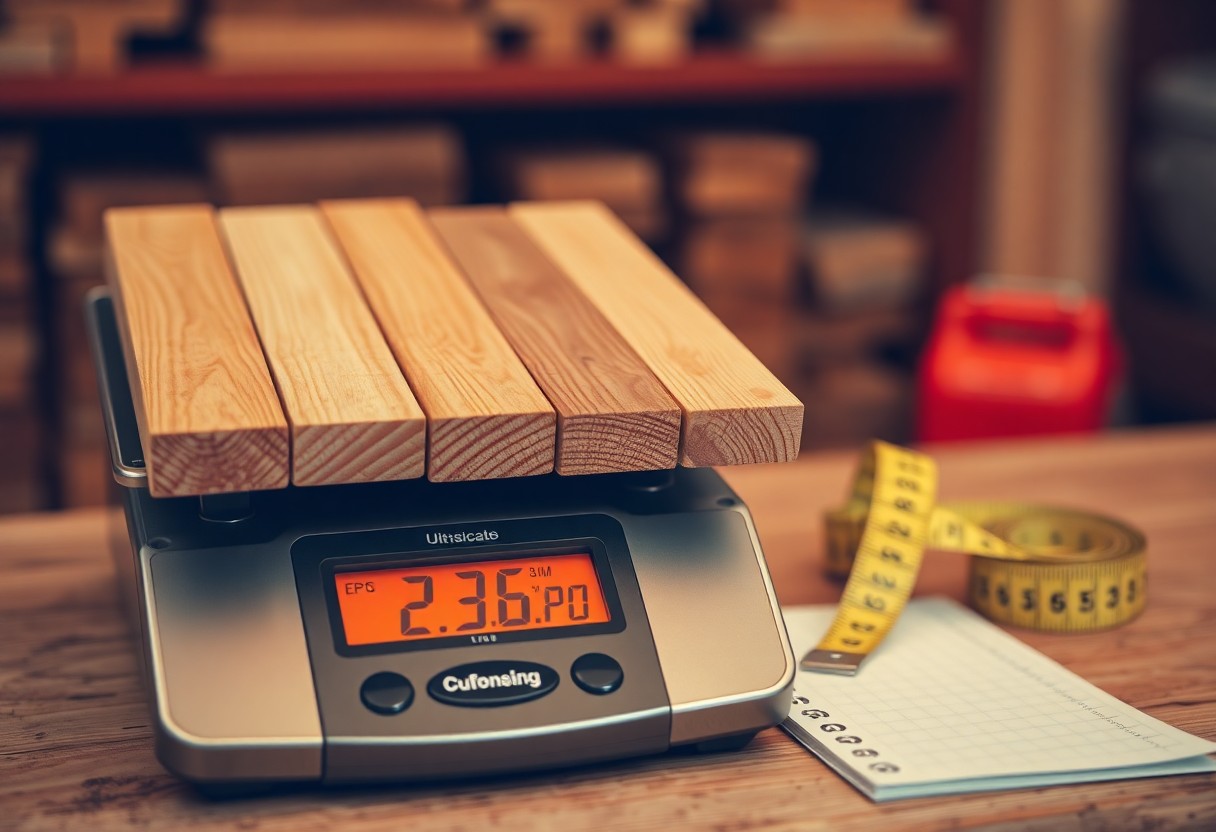I’ve worked with cedar wood long enough to know that calculating its weight can be a real challenge. You’re probably here because you’re facing the same problem – trying to figure out how much your cedar wood planks or boards weigh. Whether you’re a seasoned woodworker or a DIY enthusiast, getting the weight right is crucial for your project’s success. In this post, I’ll walk you through a simple cedar wood weight calculator that’ll take the guesswork out of your calculations, so you can focus on bringing your vision to life.
What is Cedar Wood?
Your quest for the perfect wood for your project leads you to cedar wood, a popular choice among woodworkers and builders.
Cedar wood is a softwood that comes from various species of cedar trees, known for its distinctive aroma, durability, and resistance to rot and insects.
Properties and Characteristics
Characterized by its warm, rich color and straight grain, cedar wood is a versatile material that can be used for both indoor and outdoor projects. It’s also lightweight, making it easy to work with, and has natural oils that repel insects and resist decay.
Types of Cedar Wood
By understanding the different types of cedar wood, you can choose the best one for your project. Here are some common types:
- Western Red Cedar
- Eastern White Cedar
- Atlas Cedar
- Cyprus Cedar
- Lebanon Cedar
Knowing the characteristics of each type will help you make an informed decision.
| Type | Description |
| Western Red Cedar | Most widely available, aromatic, and durable |
| Eastern White Cedar | Less expensive, lighter in color, and more prone to knots |
| Atlas Cedar | Native to Morocco, known for its distinctive blue-green foliage |
| Cyprus Cedar | Rare and expensive, often used for furniture making |
Cedar wood comes in various species, each with its unique characteristics. When choosing the right type for your project, consider factors such as durability, color, and budget. Here are some common types:
- Western Red Cedar is the most widely available and aromatic
- Eastern White Cedar is less expensive and lighter in color
- Atlas Cedar is native to Morocco and known for its distinctive blue-green foliage
- Cyprus Cedar is rare and expensive, often used for furniture making
- Lebanon Cedar is highly prized for its beauty and durability
Knowing the characteristics of each type will help you make an informed decision.

Why Calculate Cedar Wood Weight?
You’re about to initiate on a project that involves working with cedar wood, and you’re wondering why calculating its weight is so important. The truth is, knowing the weight of your cedar wood is vital for a successful project outcome.
Importance in Construction Projects
Wood, being a natural material, has varying densities and weights. In construction projects, accurate weight calculations ensure that your structure can support the load, preventing costly mistakes and potential hazards.
Estimating Material Costs
Projects involving cedar wood require precise material estimates to avoid overbuying or underbuying. Calculating the weight of your cedar wood helps you determine the exact quantity needed, saving you time and money.
For instance, if you’re building a deck, you need to know the weight of the cedar planks to ensure you have enough material for the entire project. By calculating the weight, you can accurately estimate the number of planks required, avoiding unnecessary trips to the lumberyard and reducing waste.
How to Calculate Cedar Wood Weight
Not everyone is a math whiz, but calculating the weight of cedar wood is a necessary step in many woodworking projects.
Fortunately, it’s not as complicated as it sounds, and with a few simple steps, you can get an accurate estimate of your wood’s weight.
Formula and Variables
Around the world, woodworkers use a standard formula to calculate the weight of cedar wood. The formula is: weight = volume x density.
To use this formula, you’ll need to know the volume of your wood, which can be calculated by multiplying the length, width, and height of your piece.
Conversion Factors
Formula aside, conversion factors are necessary in calculating cedar wood weight. Here are some key factors to keep in mind:
- 1 board foot = 12 inches x 12 inches x 1 inch
- 1 cubic meter = 35.315 cubic feet
- Cedar wood density varies by species, but averages around 0.35-0.45 g/cm³
This list is not exhaustive, but it covers the most common conversion factors you’ll need to calculate cedar wood weight.
A key thing to note about conversion factors is that they can vary depending on the specific type of cedar wood you’re working with. For example, Western Red Cedar has a slightly higher density than Eastern White Cedar. Make sure to research the specific conversion factors for your wood type to get an accurate weight calculation.
- Western Red Cedar: 0.40-0.45 g/cm³
- Eastern White Cedar: 0.35-0.40 g/cm³
This attention to detail will ensure that your weight calculation is as accurate as possible.
Using a Cedar Wood Weight Calculator
Once again, I find myself needing to calculate the weight of cedar wood for a project, and I’m grateful for the existence of online cedar wood weight calculators.
These tools simplify the process, saving me time and effort that I can better spend on the actual construction. With a few clicks, I can get an accurate estimate of the weight, which is important for ensuring the structural integrity of my project.
Online Tools and Resources
Along with the calculator, I also utilize online resources that provide detailed information on cedar wood density, moisture content, and other factors that affect its weight.
These resources help me make informed decisions about the type of cedar wood to use and how to adjust my calculations accordingly.
Benefits and Limitations
Limits of accuracy aside, I’ve found that cedar wood weight calculators are generally reliable and efficient. However, it’s important to understand their limitations and consider factors that might affect the results.
Using a cedar wood weight calculator has been a game-changer for me. Not only do I get quick and accurate estimates, but I also gain a better understanding of the material I’m working with.
By considering the benefits and limitations of these calculators, I can make more informed decisions and ensure that my projects turn out as planned.
Real-World Applications
Unlike other types of wood, cedar’s unique properties make it an ideal choice for various projects. From outdoor structures to indoor furniture, cedar’s durability and aesthetic appeal have made it a popular choice among builders and makers.
Deck Building and Fencing
Behind every sturdy deck or fence lies a precise calculation of the materials needed. As a builder, I know that getting the weight of cedar wood right is important to ensure the structure can withstand the elements and support the intended load.
Furniture Making and Cabinetry
Around every carefully crafted piece of furniture or cabinet lies a deep understanding of the wood’s properties. When working with cedar, I need to consider its weight to ensure that my creations are both functional and beautiful.
But what really sets cedar apart is its versatility. Whether you’re building a rustic outdoor table or a sleek, modern cabinet, cedar’s unique grain pattern and aromatic scent add a touch of sophistication to any project. By accurately calculating the weight of cedar wood, I can bring my designs to life with confidence.
Common Mistakes to Avoid
For accurate calculations, it’s necessary to steer clear of common mistakes that can throw off your cedar wood weight estimates. As someone who’s worked with cedar wood, I’ve learned that these errors can be costly and time-consuming to correct.
Incorrect Measurements
On the job site, it’s easy to misread or miscalculate the dimensions of your cedar wood planks or boards. Double-check your measurements to ensure you’re using the correct length, width, and thickness in your calculations.
Ignoring Moisture Content
Avoid neglecting the moisture content of your cedar wood, as it significantly affects its weight. Failing to account for this can lead to inaccurate estimates and potential project delays.
In fact, cedar wood’s moisture content can vary greatly depending on factors like the tree’s age, climate, and storage conditions. To get an accurate weight calculation, I always make sure to factor in the moisture content of my cedar wood, using a reliable moisture meter to get an exact reading.
Summing up
On the whole, I’ve walked you through the ins and outs of the Cedar Wood Weight Calculator. Now, you’ve got the tools to tackle your woodworking projects with confidence. I’ve shown you how to use this calculator to determine the weight of your cedar wood, ensuring your designs are sturdy and safe. You’ve learned how to input your measurements, select the right type of cedar, and get an accurate weight calculation. With this knowledge, you’re ready to bring your vision to life.








